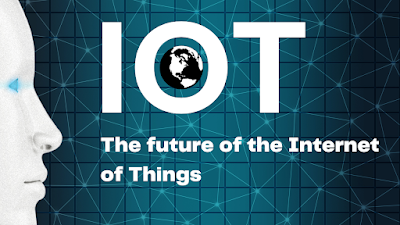Introduction:
The Internet of Things (IoT) has become a major technological trend in recent years, transforming the way we interact with devices and the world around us. IoT refers to the network of physical devices, vehicles, home appliances, and other items embedded with electronics, software, sensors, and connectivity that enables them to exchange data and communicate with each other. In this article, we will discuss the future of IoT and its potential to shape our world.
1. Increased Connectivity:
One of the most significant trends in the future of IoT is the increased connectivity of devices. As more devices become connected to the internet, the potential for data exchange and communication increases. This connectivity will allow for more efficient and effective communication between devices, leading to more automated and optimized processes. As a result, we will see a rise in smart homes, smart cities, and other intelligent systems that can monitor and optimize their environment in real-time.
2. Edge Computing:
Edge computing is another trend that will shape the future of IoT. Edge computing is about processing data closer to the source rather than sending it to a central server for processing. This approach reduces latency and improves the speed and performance of data processing. With edge computing, IoT devices can perform more complex tasks, such as artificial intelligence and machine learning, without relying on a centralized server. This trend will lead to the development of more sophisticated and intelligent IoT devices.
3. Artificial Intelligence and Machine Learning:
The future of IoT will also be characterized by the integration of artificial intelligence and machine learning. These technologies will allow IoT devices to learn from their environment and adapt to changing conditions. For example, a smart thermostat could learn from a user's behavior and adjust the temperature accordingly. As more devices become connected to the internet and gather data, the potential for AI and machine learning applications will grow. This trend will lead to more autonomous and intelligent systems, which can make decisions and take actions without human intervention.
4. Blockchain:
Blockchain technology is another trend that will shape the future of IoT. Blockchain is a verifiable and secure ledger that records transactions in a transparent and irrefutable way. This technology can be used to create secure and transparent networks of IoT devices. For example, blockchain can be used to create secure and transparent supply chains, which can track the movement of goods from the manufacturer to the end consumer. This trend will lead to more secure and trustworthy IoT networks, which can help protect against cyber threats.
5. 5G Networks:
The future of IoT will also be characterized by the adoption of 5G networks. 5G networks provide faster data transfer speeds and lower latency than previous generations of wireless networks. This will enable IoT devices to communicate and exchange data more efficiently, leading to more seamless and effective communication between devices. Additionally, 5G networks will allow for more devices to be connected to the internet simultaneously, increasing the potential for IoT applications.
Conclusion:
The future of Internet of Things IoT is exciting and full of potential. As more devices become connected to the internet, the potential for data exchange and communication will increase, leading to more efficient and effective processes. Edge computing, AI and machine learning, blockchain, and 5G networks will all play a significant role in shaping the future of IoT. As these technologies continue to develop and mature, we can expect to see more intelligent, autonomous, and secure IoT devices and systems that will transform the way we interact with the world around us.

